Ancient Secrets Of The Black Basalt Statue Of Priest Djedhor Revealed
Ellen Lloyd - AncientPages.com - Ancient Egyptians constructed sacred temples and other buildings we admire today. Excavations in the Land of the Pharaohs have brought to light splendid ancient Egyptian artifacts that we can see in museums, and we do wonder what more ancient secrets will be revealed once we learn what could be hidden beneath the sand, but that may take a long while.
For now, we should be thankful we have been given the opportunity to see what has been discovered in Egypt so far, and each artifact, building, or statute provides us with valuable knowledge about ancient Egyptian history, traditional customs, and religious beliefs.
Left: Djedhor statue in Egyptian Museum in Tahrir. Credit: Egypt Today - Right: Sarcophagus of Djedhor 200–150 B.C. Credit: Public Domain
When archaeologists entered the ancient Egyptians tombs for the first time, they saw walls were covered with mysterious symbols. It was long assumed that these writings were passages from ancient texts. However, later, when scientists discovered the secrets of hieroglyphs, they realized these ancient Egyptian texts were spells.
Ancient Egyptians did not consider death to be the end of one’s existence. In fact, death was, in their opinion the beginning of something new, and you had to be well-prepared to enter the realm of the afterlife. People believed a person “would be judged by Osiris, the god of the afterlife, the underworld, and the dead. It was important to prepare the dead bodies for eternal existence in joy and happiness.
Numerous tombs of various styles and dates containing carefully prepared bodies and a variety of funerary goods reveal ancient Egyptian belief in the afterlife, which was not the end of life but only a transition to another reality.” 1
After years of studies, scholars discovered pyramid texts charted the pharaoh’s journey into the afterlife.
“Pyramid Texts represent the oldest known collection of ancient Egyptian hieroglyphic inscriptions containing religious texts, elaborate spells (or utterances), hymns, prayers, thousands of lines of fragments of myths and legends, references to mortuary and funerary rites, historical events, festivals.” 2
Though the thoughts of the afterlife played a central part in ancient Egyptian religious beliefs, people were also troubled by daily problems, and they were convinced one could accomplish a lot with magic.
Of course, magic in ancient Egypt can not quite be compared with what we in modern days define as magic, though some practices like invoking spirits or casting spells are similar.
Magic in ancient Egypt co-existed peacefully with science and religion. Everyone resorted to magic, from the Pharaoh to the poorest person in the country. Ancient Egyptian priests were “practitioners of magic in ancient Egypt, but the people who used magic had other functions as well. Most commonly, they belonged to the priesthood.
Most Egyptian priests lived ordinary lives outside the temple walls. Read more
Full-time secular magicians probably did not exist in Egypt before the early first millennium AD and some would dispute their existence even at this period.
Judging from the amulets found in graves of the fourth millennium BC, magic was a part of Egyptian culture from the beginning. Little is known about the type of people who may have practiced magic at this period.” 3
Knowing the importance of magic in ancient Egypt, it should be surprising to learn statues, artifacts, and buildings were often covered with magical formulas.
The black-basalt statue of priest Djedhor is a remarkable piece of ancient Egyptian art. Djedhor was a royal scribe as well as a priest of Min and Hathor. Besides his name and titles, the inscription on his stone sarcophagus also mentions his mother Tikas. His entire black basalt statue is covered with mysterious symbols and magical texts. Discovered in the temple of Athribis, a city that, according to the Palermo Stone was once the capital of Lower Egypt, the black-basalt statue reminds of the significance and dangers of scorpions.
The statue is completely covered with magical texts intended to treat venomous bites of scorpions and poisonous reptiles. Ancient Egyptian priests were responsible for treating sick people and often they did this with the help of magical formulas that helped them contact divine forces in the other world.
Ancient civilizations worldwide feared and admired the scorpion. A mysterious Scorpion goddess appears under different names among many ancient cultures. She is mentioned in several myths and legends worldwide.
Goddess Serket in Egyptian mythology depicted as a scorpion. Credit: Francesco Dazzi
We encounter her in Mesopotamia, ancient Egypt, in the myths and legends of the Aztecs and Hindu people.
Ancient Egyptians worshipped Serket, the Scorpion Goddess who could heal poisonous bites and sting evildoers.
“She was depicted as a scorpion or as a scorpion with the head and torso of a woman and even as a woman with a scorpion on her head. The scorpion is a symbol that appeared on the earliest Egyptian artifacts related to the earliest human settlements to the beginning of the Early Dynastic Period around 3100 BC.
The black statue of priest Djedhor gives a unique glimpse into the religious views in ancient Egypt. Credit: Tharir Museum
In a strong association with the scorpion, which is famous for protecting its young, also Serket symbolizes the strong protection of motherhood and nurturing of children. In this aspect, she was compared to the Egyptian goddess Isis, who protected Horus from Seth, the god of chaos and, during the child's infancy.” 4
The magnificent black-basalt statue of Priest Djedhor is kept at the Egyptian Museum in Tahrir. According to the museum, the statue “dates back to the Late Era (about 323-317 BC). It bears the artistic qualities of what is known as the "Little Horus Plaques" and is considered one of its varieties.
The Little Horus Plaques appeared in the Late Era and were used for therapeutic purposes, especially for the treatment of venomous bites.” 5
Like many other ancient Egyptians objects, the black statue was believed to be under a spell. This is most likely because it is covered with so many magical texts.
Those who are interested in ancient Egyptian cosmological beliefs will find the statue of great significance. It has many mysterious carved symbols that reflect ancient Egyptians views of the stellar world that is intertwined with ours and the realm where souls eventually enter.
As for the significance of the scorpion, it's worth remembering this animal was not only associated with females. In Babylonian myths, we encounter the mysterious scorpion men known as the Aqrabuamelu.
Written by Ellen Lloyd – AncientPages.com
Copyright © AncientPages.com All rights reserved. This material may not be published, broadcast, rewritten or redistributed in whole or part without the express written permission of AncientPages.com
Expand for references- Sutherland - Death And Afterlife In Ancient Egyptian Beliefs – Death As Transition To Another Reality, AncientPages.com
- Sutherland - Pyramid Texts Of Ancient Egypt That Charted Journey Of Pharaohs Into Afterlife, AncientPages.com
- Geraldine Pinch - Magic in Ancient Egypt
- Sutherland - Serket: Scorpion Goddess Who Could Heal Poisonous Bites And Sting Evildoers, AncientPages.com
- Mustafa Marie - What you might not know about Djedhor’s black basalt statue in Egyptian Museum in Tahrir, Egypt Today
More From Ancient Pages
-
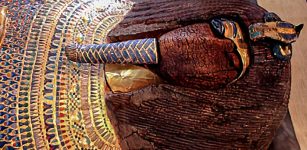 Dispute And Mystery: Strange Case Of The Tomb KV55 In The Valley Of Kings, Egypt
Civilizations | Oct 8, 2015
Dispute And Mystery: Strange Case Of The Tomb KV55 In The Valley Of Kings, Egypt
Civilizations | Oct 8, 2015 -
 On This Day In History: Walpurgis Night Celebration In Northern Europe – On Apr 30
News | Apr 30, 2016
On This Day In History: Walpurgis Night Celebration In Northern Europe – On Apr 30
News | Apr 30, 2016 -
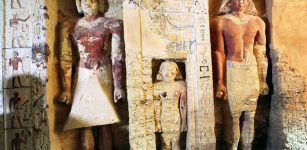 Rare Archaeological Discoveries In The Sacred Animal Necropolis In Saqqara
Archaeology | Apr 26, 2020
Rare Archaeological Discoveries In The Sacred Animal Necropolis In Saqqara
Archaeology | Apr 26, 2020 -
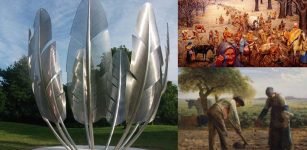 Kindred Spirits: Why Did The Irish Build A Monument In Honor Of Native Americans?
Ancient History Facts | Oct 22, 2016
Kindred Spirits: Why Did The Irish Build A Monument In Honor Of Native Americans?
Ancient History Facts | Oct 22, 2016 -
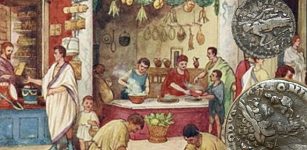 Thousands Of Roman Coins Found Across Europe Are Fake – Archaeologists Say
Archaeology | Jul 9, 2019
Thousands Of Roman Coins Found Across Europe Are Fake – Archaeologists Say
Archaeology | Jul 9, 2019 -
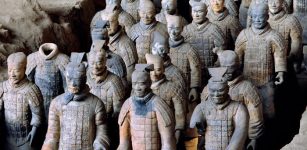 On This Day In History: Terracotta Army Buried With Emperor Qin Shi Huang Discovered – On Mar 29, 1974
News | Mar 29, 2017
On This Day In History: Terracotta Army Buried With Emperor Qin Shi Huang Discovered – On Mar 29, 1974
News | Mar 29, 2017 -
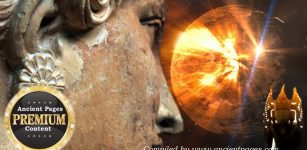 Secret Ancient Knowledge Of Venus – Ancient Gods, Giants And More Controversial Theories – Part 2
Featured Stories | Jul 2, 2018
Secret Ancient Knowledge Of Venus – Ancient Gods, Giants And More Controversial Theories – Part 2
Featured Stories | Jul 2, 2018 -
 Mysterious Inca Citadel With Platforms, Passages And Walls Discovered In Peru’s Rainforest
Archaeology | Oct 15, 2017
Mysterious Inca Citadel With Platforms, Passages And Walls Discovered In Peru’s Rainforest
Archaeology | Oct 15, 2017 -
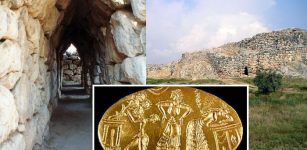 Ancient Mystery Of The Tomb Of Tiryns – Burial Place For An Unknown Mycenaean Hero?
Featured Stories | Jan 11, 2021
Ancient Mystery Of The Tomb Of Tiryns – Burial Place For An Unknown Mycenaean Hero?
Featured Stories | Jan 11, 2021 -
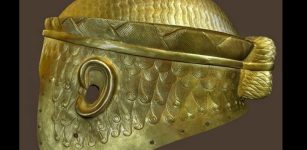 Helmet Of Meskalamdug – Sumerian King Of The First Dynasty Of Ur
Artifacts | Apr 14, 2016
Helmet Of Meskalamdug – Sumerian King Of The First Dynasty Of Ur
Artifacts | Apr 14, 2016 -
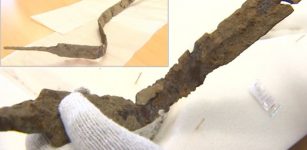 Rare 2000-Year-Old Celtic Sword Unearthed In East Bohemia
Archaeology | Sep 15, 2020
Rare 2000-Year-Old Celtic Sword Unearthed In East Bohemia
Archaeology | Sep 15, 2020 -
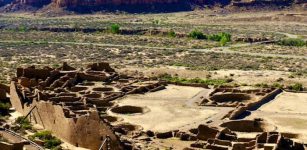 Ancient Chaco Canyon Was Much More Than A Ceremonial Site New Study Reveals
Archaeology | Oct 28, 2021
Ancient Chaco Canyon Was Much More Than A Ceremonial Site New Study Reveals
Archaeology | Oct 28, 2021 -
 How Early Farmers In Scandinavia Overcame Climate Change
Archaeology | Dec 19, 2023
How Early Farmers In Scandinavia Overcame Climate Change
Archaeology | Dec 19, 2023 -
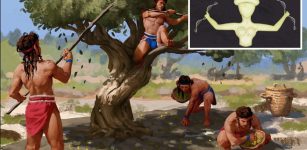 Ancient DNA Reveals “Completely Unexpected” Marriage Rules In Minoan Crete
Archaeology | Jan 16, 2023
Ancient DNA Reveals “Completely Unexpected” Marriage Rules In Minoan Crete
Archaeology | Jan 16, 2023 -
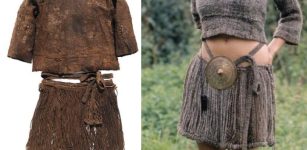 Egtved Girl’s Unique 3,400-Year-Old Style Of Dress
Featured Stories | Nov 17, 2023
Egtved Girl’s Unique 3,400-Year-Old Style Of Dress
Featured Stories | Nov 17, 2023 -
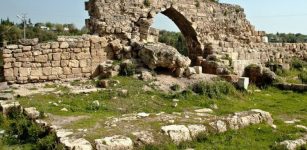 7,000-Year-Old ‘Immortal City’ Of Misis – Excavations Shed Light On Its Fall
Archaeology | Aug 25, 2015
7,000-Year-Old ‘Immortal City’ Of Misis – Excavations Shed Light On Its Fall
Archaeology | Aug 25, 2015 -
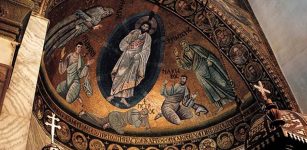 Ancient World’s Second Largest Library Of Codices, Manuscripts Reopened In Sinai
Archaeology | Dec 17, 2017
Ancient World’s Second Largest Library Of Codices, Manuscripts Reopened In Sinai
Archaeology | Dec 17, 2017 -
 Curious Bannerstones Used By Prehistoric Native Americans For Unknown Purpose
Artifacts | May 31, 2021
Curious Bannerstones Used By Prehistoric Native Americans For Unknown Purpose
Artifacts | May 31, 2021 -
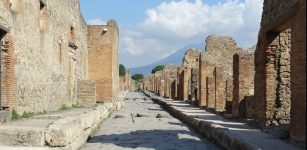 Why Did Ancient Romans Build So Many Straight Roads?
Ancient History Facts | Aug 9, 2017
Why Did Ancient Romans Build So Many Straight Roads?
Ancient History Facts | Aug 9, 2017 -
 Mythical Place Where Gorgon Medusa Dwelled And Was Killed May Have Been Found By Archaeologists
Featured Stories | Sep 15, 2024
Mythical Place Where Gorgon Medusa Dwelled And Was Killed May Have Been Found By Archaeologists
Featured Stories | Sep 15, 2024




